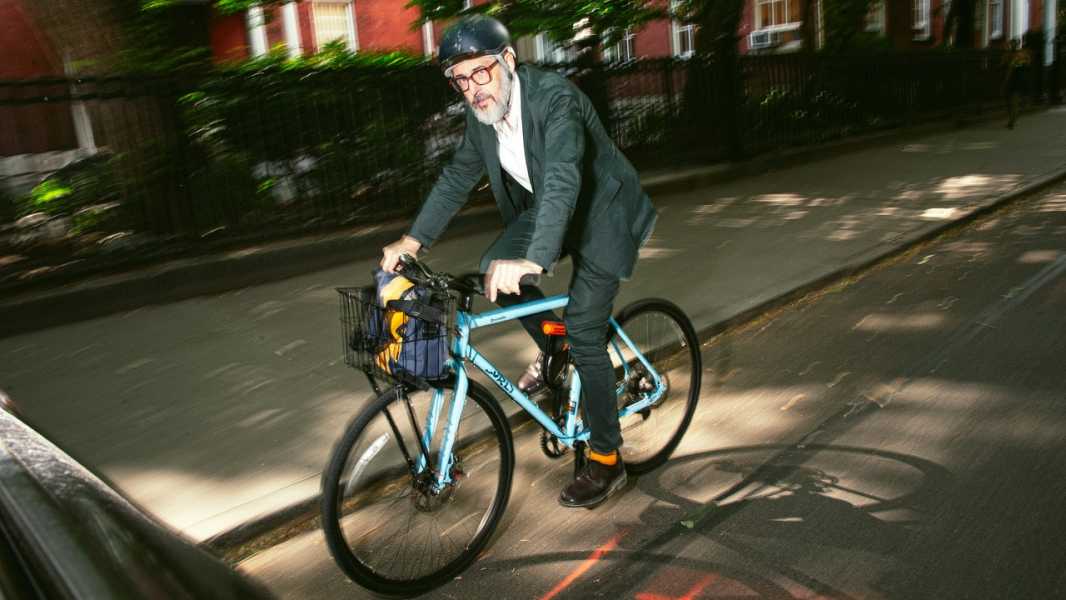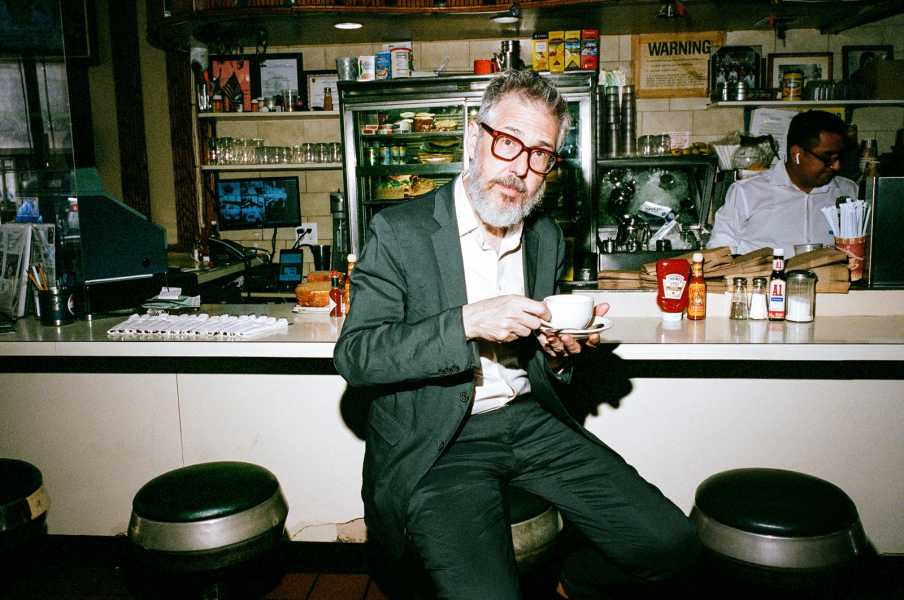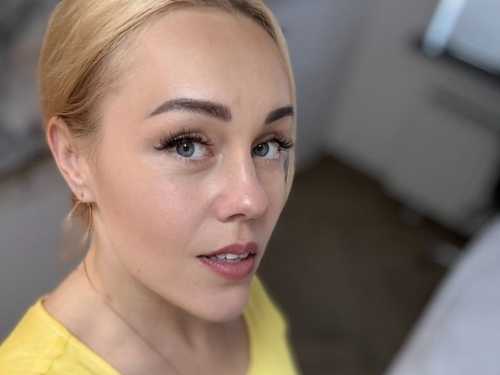
Save this storySave this storySave this storySave this story
It can be easy to take the greatness of “This American Life,” the weekly public-radio show and podcast hosted by Ira Glass, for granted. The show, which Glass co-founded in 1995 at WBEZ, in Chicago, has had the same essential format for twenty-eight years and more than eight hundred episodes. It was instrumental in creating a genre of audio journalism that has flourished in recent decades, especially since the podcast boom—which was initiated by the show’s first spinoff, “Serial,” in 2014. Like “The Daily Show” or Second City, “This American Life” has trained a generation of talented people, and Glass’s three-act structures, chatty cadences, and mixture of analysis and whimsy are now so familiar as to seem unremarkable. The Times’ flagship podcast, “The Daily,” basically grafts Glass’s blueprint onto the news cycle; in 2020, the paper bought the production company behind “Serial.” Other “This American Life” alums helped found production companies such as Gimlet, which sold to Spotify for two hundred and thirty million dollars before being effectively dissolved a few years later.
Glass, the son of an accountant father and psychologist mother, grew up in Baltimore with his two sisters. As a kid, he liked to go to the theatre with his family, loved comedy, put on shows in the basement; in high school, he performed in musicals and dabbled in magic. He started college at Northwestern, and worked at NPR in the summers. He eventually graduated from Brown, where he studied semiotics, then returned to NPR, where he spent the next seventeen years cutting tape and reporting and producing for “Morning Edition,” “All Things Considered,” and other shows. In 1989, he moved to Chicago, where he later co-created the show that became “This American Life”; it quickly won a Peabody Award. Now based in New York, Glass regards some of the show’s recent episodes as among its best ever. I agree. Lately, its deft touch has extended to “The Other Guy,” about people’s quasi-doppelgängers, and “Lists!!!,” about lists, and, the week after Donald Trump’s conviction in New York, “Come Retribution,” about the former President’s dreams of vengeance. The episode begins with a story about a series of Trump speeches, including his first official campaign rally in 2023, when he appeared in Waco, Texas—a place freighted with far-right symbolism—as speakers played a song sung by men imprisoned for alleged January 6th-related crimes. And that’s only the prologue.
By his own account, Glass works most of the time. We met for breakfast in Nolita after a few apologetic reschedulings; he had recently returned from a rare vacation. He arrived in a dapper suit, on a bicycle. Our conversation has been edited for clarity.
You biked in a suit!
Yes. That’s my move. It’s not that hot. When it gets hot, you take off the jacket.
It’s funny to interview interviewers.
I know, and I apologize. But I do try—as an interviewer, I feel a kind of obligation to give what I would want to get. I think it’s very much a do-unto-others-as you’d-have-them-do-unto-you situation.
You were just on vacation. How was it?
It was really nice, and I had this experience afterward that I feel embarrassed to articulate out loud. But the week after, I would wake up every morning and be, like, what is this feeling? [Laughs.] Like, Is this what it’s like to feel rested? I can’t remember the last time I was going into work and feeling kind of awake and alert and happy all day long. And it was a really productive week: we cranked out a new episode, I wrote a whole story in two days, like a twelve- or fourteen-minute story. I just felt like, this is amazing!
How do you normally clear your head when you’re in the middle of a work week? It seems like making audio requires very intense focus, and that you’d need to recharge in order to be good at it.
I mean, what I took from this experience is that I really don’t give enough thought to recharging at all. Often, I’ll get through a week and we’ll finish a show on a Friday, and the next day I get up at five and fly to a city and give a talk, and then get up at five the next morning to fly back home. And then sometimes on Sunday I’ll have some editing that has to happen, or I have to write something to get ready for the next week. So, honestly, I don’t always do such a good job of it. But the ways in which I take a break are just, you know, hang out with my girlfriend. I would say watch a movie, but I haven’t watched movies or seen any television in, like, a year.
Do you listen to stuff? Music, podcasts?
I do listen to stuff. I have a lot of, like, work-homework podcasts to catch up on, usually. And a few shows I listen to when I’m on my bike, or cooking. Generally at double speed.
I can listen to chat podcasts at double speed, but the more highly produced ones—if somebody’s sound-designed something, it just feels strange to alter it.
I don’t know. I suppose it’s disrespectful to the sound design. I feel like, if somebody’s listening to our show at double speed, go ahead. It’s fine. And also I’m old enough that, like, I started in radio when it was still reel-to-reel tape. I was a tape cutter at NPR. And when you’re a tape cutter, the physical fact is that you can’t jump around in the audio like you can on a screen, so you listen to everything at double speed, you edit at double speed, double speed doesn’t sound faster to you. It’s funny because, back then, blind people were the other group that listened to stuff at double speed.
My grandmother used to listen to Books on Tape—you could order them through a service for blind and low-vision people. They had special tape machines.
So you can speed it up. Yeah.
Do you remember the moment when the technology switched to digital?
Oh, totally. It was actually right when I transitioned from working at NPR to doing “This American Life.”
Really!
It was 1995, and NPR was still using reel-to-reel tape machines. But I was starting this new show, and I was going to have to outfit it with gear and figure out a way to pay for it. WBEZ, my partner, was also using analog tape, and analog tape is actually a lot more expensive—a reel at the time cost, like, twelve or fourteen dollars for an hour of tape. So you can see—like, to do a story you can end up running through five or six reels of tape, and the mixes would be another hour or so. And then the reel-to-reel tape machines were, like, two thousand bucks. Whereas you could get a used Mac for a few hundred bucks, then get software, and it’s so much cheaper. I just realized, like, we’d save so much money. I taught myself to edit digitally the summer before doing “This American Life.”
Were you scared, or excited about the possibilities?
I mean, all of that. I did three pilots in my dining room, just off my savings and a little bit of money from the MacArthur Foundation. Because of the MacArthur funding, there had to be an arts component. And so, if you go back to the early years of the show, there’s a much more conscious effort to mix local writers and artists with the journalism. In fact, the early pitch of the show was: we’ll take different artists and journalists and have them all look at the same subject. And so a typical show was sort of, you know, I would go to a high school that was putting on a school play, and David Sedaris would write a piece about what it was like to be a drama kid, and we would just intercut between the two. And then the staff just got more interested in the journalism side of it, and we developed other sources of funding so that we had the flexibility to not keep doing that.
Do you think you would have incorporated artists if you hadn’t had that funding?
I would have incorporated writers, because that was already happening. I’d been producing David Sedaris for “Morning Edition,” at NPR, and he would sometimes have a story that was longer than eight or nine minutes, which was the maximum length of a “Morning Edition” segment. At the time, I think their feature segments were seven minutes and their news segments were nine. So if he wrote something that was, you know, twenty-three minutes long, there was literally no place in American radio where you could put it.
I vividly remember waking up at some point in the early nineties, listening to NPR, and hearing David Sedaris’s voice for the first time. I think he was in France, and there was a line where he said, “How much is that wax head in the window?” It was before anyone really knew him, and I was just sort of thrilled at that sensibility—it was closer to the way that my friends and I talked, nothing like what we were used to hearing on the radio. I remember sitting upright and being, like, This is it—whoever this guy is.
Yeah. I had the same feeling the first time I heard him read in a club. I was, like, Oh, this is so special.
I guess it also felt a little subversive. The things he dared to be funny about—you weren’t used to hearing that on NPR.
It’s interesting you say that, because sometimes the stories were so dark that the producers at “Morning Edition” would be, like, Can we see the scripts? And I knew if I showed them the scripts they would say they’re too dark. And so I would put a kind of bouncy, light music under it—that was actually a thing! Like, I’d really just think, You’ll understand it better if I produce it first.
People don’t always know what listeners will be able to handle. I remember, right after the first season of “Serial,” Sarah Koenig was on a panel and they talked about the show being an experiment in how much detail people could handle. And, of course, the answer was a lot.
Yeah. It’s funny, I feel like people don’t remember what the experiment of “Serial” was. Sarah and Julie Snyder, who produced it with her, really had no idea if people would listen to a documentary story for more than one episode. Like, it’s such an accepted fact of life now, but that’s why they called the show “Serial”—because the thing that was new is, we’re going to take more than one episode to tell you this story. At least during the early part—the audience numbers started climbing after a few episodes—the way they talked about it was, like, Oh, nobody’s going to listen, we can do anything we want.
With Sedaris, one of the things that’s so strange to think about now—I remember there was a story where David refers to Hugh, his boyfriend, but he doesn’t say his boyfriend in the text, he just offhandedly says Hugh. And I was, like, I should put that in the intro. So the intro said, “David Sedaris and his boyfriend, Hugh, are living in Paris for the summer,” or whatever it was, and it was before people were out in that way, and Bob [Edwards, who hosted “Morning Edition” at the time] wouldn’t read it. And that was something else about Sedaris: he was a gay commentator on national radio, but he wasn’t on there as a gay commentator, he was just on there as a commentator who happened to be gay. That was new at the time. It’s funny to think how that was a statement on its own.
I wanted to ask about the business part of your job—you’ve said it’s sometimes refreshing to switch to that from the writing side.
Yeah. With writing, there’s kind of an existential [anxiety]—will the story exist at all? Like, you’re making it out of nothing. Whereas with editing, or with looking at your company’s books, there’s a thing there and you can adjust.
What do you like about the business stuff?
Part of it is the dollhouse quality to owning a business. You can just think, Well, what kind of employee handbook should there be? How would I want this to be? How would I want that to be? Just getting to build a utopian world that also happens to be a functioning business. That’s kind of fun—building a thing that you and your co-workers can live in.
And then, when there are challenges, it’s interesting to think through solutions. In the early days, the big business challenge was, How do we even get onto public-radio stations? There’s not a network boss who says to everybody, you know, “It’s going to be Tuesday nights at nine.” You have to talk every single station into picking you up. You have to think, What do the stations want? And how do you talk to them about what they want? We gamed it out. [At the time,] what they wanted was better pledge-drive material. And we gave them killer pledge-drive material that brought in a ton of money and was really funny and really different.
What were some of those pieces like? Asking people for money is never—
Asking for money isn’t fun. It has everything going against it as broadcasting. It’s repetitive. You’re interrupting stuff that people like in order to say stuff that they don’t want to hear. You have so many strikes against you. We were just trying to be funny. I think the ones that brought in the most money were, like, me stopping people who looked like they might be public-radio listeners as they were leaving Starbucks. I would ask, How much was that coffee, how much do you spend on coffee every day, how many hours do you listen to public radio? In the best-known spot, there was a guy who listened for hours a day, and he’d never given. And I’m talking to him, like, you spent four dollars here—how long will that take you to drink? And he’d be, like, I don’t know, twenty-five minutes. And I say, You listen for hours a day and you give us nothing? And you could see, like, beads of sweat pop out on his head. And it’s good theatre, because the audience identifies with me, but they also know they are him.

There’s an element of guilting people, but in a fun way.
Yes, exactly. There was a series where I would call people on the phone; people would turn in their friends and family. Part of the problem with that, as theatre, is the dramaturgy was bad, because as soon as I would call them they would give in. You really need them to fight it. You need them to make excuses, to stand in for the listener who’s not pledging.
I want to talk about some of the big episodes you’ve done recently. “Come Retribution,” about the ways in which Trump might attack his enemies if reëlected, was great. I found myself tearing up at that moment when the January 6th choir started singing at his campaign rally in Waco. The whole thing is so sad.
That’s the power of music, right? It’s really a very visceral moment, imagining Trump standing there, with his hand over his heart, as images of the Capitol riot play on giant screens behind him in Waco, Texas.
[With Trump,] there’s a story problem: How do you start a show on something that everybody already knows about, on a topic everybody’s already tired of? You have to be super ingenious in the first minute because everybody’s ready to turn off the podcast. We were interested in doing the show, actually, because one of our producers, Alix Spiegel, read Jonathan Karl’s book [“Tired of Winning”] and noted that scene. I mean, I credit Karl at the beginning of the show, because we basically just steal his opening, because we knew this is the way in. We had a question that nobody else was reporting. Trump is going around saying he’s going to take revenge on those who have wronged him. How seriously do those people take him? Do they actually think, like, Oh, no, he means it? Or do they think, Blah blah blah, Hillary’s not in jail, what’s going to happen to me?
She might be if he had more power over it.
He really did want to get her prosecuted, but he just failed. But anyway, we were a little behind the news because once the guilty verdicts came down in his New York case, then suddenly everybody in right-wing media was talking about retribution. And so we felt like we should have done the show two weeks earlier. It was almost a little bit of a fuckup. Did it feel new enough?
Yeah. But I also feel like the literary approach that “This American Life” takes—it goes deeper, and people want that treatment, even if the subject isn’t something that happened two seconds ago.
Hopefully, yeah. The show we did a couple of years ago that won the Pulitzer is like that, too. It was kind of a summary of his remain-in-Mexico policy. And so it was all stuff that had been in the news, but in these kind of policy-oriented pieces that you have to be a certain kind of person to read, you know? And [we were] able to just be, like, “O.K., here’s what this means.” And go there in a way that has drama and characters and funny moments.
“Come Retribution” juxtaposes the Waco rally with Trump’s dry policy speeches from earlier in the campaign, which I had totally forgotten about. I was surprised he’d even tried the policy speeches, because it seems like the Waco energy is what fuels his whole movement, the vengeance and anger and victimhood.
You know, I don’t totally agree with that. As we document, his followers are various, and they like him for different reasons. And, you know, in the last act, Zoe [Chace] talks to Trump people before and after the verdict, and most were, like, “I don’t care about the retribution stuff. Just fix the economy.” And they think well of him, so they’re just, like, “He’s not going to have time for that. He doesn’t care about it.” I think, if you like him, you think the best of him. That doesn’t seem strange to me at all.
I noticed that, in the episode, sometimes it’s “If he gets elected again, he’ll probably do this,” and sometimes it’s “When.” I mean, there can be this language of inevitability.
Oh, I don’t feel that! It seems like a coin-toss kind of race.
You think so?
Yeah! Do you listen to “Hacks on Tap”? You should. I think it will affect the way you see the election.
How do you tend to take in the news?
It’s shockingly spare, because I don’t have that much time. Most of the newsy stuff in the Times app; a couple of Washington Post reporters I like. I listen to “The Daily.” Their episode about what Trump is going to do in his second term came out before “Come Retribution,” and was humbling to listen to in its utter devastating precision. They have the advantage of reporters like Maggie Haberman, who are actually talking to people around Trump and who say, O.K., here’s what we expect he’s going to do. And then they walk through it and do a great episode where they hit the plot points really perfectly, in a way that makes me go, Fuck you people! [Laughs.] Bastards. But, anyway. I feel very competitive.
That’s good, though, right? It’s a cliché, but it can spur you to make better work.
Yeah, it’s nice to have that. There was this period with “Radiolab” where I felt like Jad Abumrad and Robert Krulwich would do episodes and I just thought, Fuck you guys. [Laughs.] They had such incredible sound design, on a level we never aspired to. What’s interesting about “The Daily” is that when the Times got into podcasting, it took the lesson of narrative that we learned—give it a beginning, middle, and end. That’s what Lisa Tobin [the Times’ executive producer of audio] invented for them: here’s how you do narrative, but for the daily news.
There’s a podcast about Israel, “Unholy,” that does the same thing. It’s a big news-TV anchor [Yonit Levi, of Israel’s Channel 12] and this incredibly wonderful writer for the Guardian, Jonathan Freedland.
So I could listen to that and understand more about the Benny Gantz moment.
Yeah. There’s Ezra Klein’s show. P. J. Vogt’s new show, “Search Engine.” In each episode, he basically takes one question and answers it. Some of the episodes are so remarkably good. And what’s interesting about it as a business model—he’s basically doing a chat show as a kind of sophisticated narrative. I feel like it’s a model somebody could make new podcasts from. They did an episode about why, if there are all these empty office buildings, we don’t just make them apartments, since there isn’t enough housing. An interesting question.
What’s the answer?
You know, it’s the wrong kind of space for apartments. It’s just, like, glass walls.
You’ve been devoted to “This American Life” for decades, but you’ve said some of the show’s best work has happened in the past year.
Yeah. I think we had the greatest six months in the history of the show. And then there was a period in the second half of last year where we were, like, These aren’t as good, we’re not coming up with stuff.
But in that first six months, what was—
The producers just found stories that could be wonderful. This is the period that started at the beginning of 2023. There’s this episode that I do with Etgar Keret, which was just a series of incredible little short stories about his mom, where the structure of the show was very different. And the stories themselves were each like a little bomb, funny and emotional.
Then Tobin Low hosted a Valentine’s Day show that was a concept-y show: how do you fall in love? We produced an episode with this incredible reporter, Caroline Kitchener, marking the nine-month point after Roe was overturned. So, the women who had been planning to get abortions that month [when the decision came down]—what happens to them? Do they have those babies? And then that was followed by this show that a brand-new staff member, Ike Sriskandarajah, did, a comic story about how he and his friends decided to buy a boat together. But they were not boat people, and the story ends with it sinking in Boston Harbor.
There was also an episode about rats, inspired by the mayor’s war on rats, which is just ridiculous. We’re not going to make any progress in that war. But I learned a lot. There’s a province in Canada where they don’t have any rats.
What?!
They kept them out! So I go out with the rat hunters in Canada. But at one point Ike was, like, Well, we’re hearing from all these people, but as journalists shouldn’t we get the rat point of view? And so I co-host the show with two rats, played by these incredibly wonderful comedians, Bashir Salahuddin and Chandra Russell.
And so that’s six months of very lavish, original shows. And then, after that, somehow people weren’t coming up with stuff that was good. And we did a whole reorganization of the staff to do a better job. My executive editor, Emanuele Berry, did all sorts of stuff to fix the problem. Honestly, a lot of the drama of running the show is just, like, how do you keep coming up with stuff that’s good enough?
Have you found an answer?
It’s the hardest part of making anything. And it’s a funny situation, because the staff is, like, a dozen producers, four or five editors, twenty, twenty-five people putting together the show, [along with] the support staff. For years it was just four of us doing everything. To think that we have this many people and it’s hard to find material we’re excited about—that’s a very difficult thing to grapple with.
You’ve been making this show since 1995, so you’ve seen podcasts go through this whole boom and—not bust, but, you know, dramatic—
I think “bust” is the right word. It’s really hard. People have been getting let go.
What’s it like watching that happen?
I wish I had a smarter answer for this, but the answer is that it’s so hard to make our show that I don’t pay that much attention to the rest of it. I mean, I hear the news. I just feel like our thing is just—it’s hard enough. Like, this week and last week I’ve just been working all the time, getting up at six in the morning and starting to edit at six-fifteen and going all day long.
So is the way you keep engaged the stories themselves? You find good stories and stay so focussed on them that you can remain optimistic each week?
To varying degrees. On a good week, it’s super exciting, because it’s, like, Oh, we’re doing something that nobody else is. And then there are weeks where it’s, like, These are the [stories] we found, let’s make them the best we can. And those weeks are hard, because it takes just as much time to make a B-level show as it does to make an A-level show.
You mentioned breaking format in some of your recent episodes. Have your thoughts on structure evolved at all? Do you strive for a different balance of light and dark, funny and serious?
We went through a phase of things getting much more serious, and as a staff we just felt like it was too heavy. And so, the last six months, we’ve been trying to amuse ourselves. I feel like the low point was during the COVID years, when it was hard to find stuff that would be lighter.
Were there any creative—I don’t want to say benefits, but lessons learned during that period?
No. I mean, we hired a bunch of wonderful people during that period who don’t live in New York. Beyond that, no, all downside.
How do you feel about the Chicago era of the show versus the New York era? Do you have thoughts about life in either city?
Yeah, your quality of life goes down so much when you move to New York.
Why?!
What are you talking about?! In Chicago you can have a big, beautiful apartment for cheap, and you can drive everywhere. Chicago is wonderful.
Do you like being here anyway?
Now I do, but it took a while. I mean, the stuff I like about New York is that I like going to plays, and I see a lot of plays, and it’s incredible to me that people who are directing Broadway and Off Broadway plays are my friends. That is something that was really unimaginable back when I was a kid, or in Chicago. I do like that.

Have you incorporated any New York theatre people into your show?
Not lately, but yes. We’ve done a bunch of things with people who write musicals. The first thing we did was with Bobby Lopez, the composer, and then we did a second one with him and his wife, Kristen Anderson-Lopez. And then we did a musical with Lin-Manuel Miranda that Michael Mayer directed. My cousin Philip [Glass] did a little thing for us at one point.
Oh, yeah! Have you gotten to know him better now that you live in the same town?
So much better! It’s been really sweet. When I was growing up, he had already moved to New York. He was my dad’s first cousin, and when he would come through town and do a show we would go and say hi. But I didn’t really know him.
The theatre thing reminds me: when you were young, you liked to put on shows, and “This American Life” has a similar three-act structure. Are you still kind of the kid putting on a performance?
Of course! I think a lot of my aesthetics were shaped by the Broadway shows that my mom took us to in Baltimore. Those old-school shows like “Fiddler on the Roof,” which start off funny and then get more serious, and then, by the end, they’re tragedies about something big and sad. I always had that in my head. In retrospect, I wasn’t interested in journalism. I happened to get a job at NPR when I was nineteen, and I started to do documentary on “All Things Considered” and “Morning Edition,” and I always had this feeling that a story could be more—could have more feeling, more something!
And what I did was push everything that I was learning about making true stories into a format that had the emotional beats and structure of “Fiddler on the Roof.” A prototypical “This American Life” story gets the characters onstage, makes you like them, moves them through all their emotional paces, and then takes you to a place where there’s some thoughtful, sad, reflective beat at the end. Somebody says something that gets you in your heart, and then you bring up some music and you’re out, you know? And so I think of that stuff as very formative.
Did you see the Yiddish “Fiddler on the Roof” that was Off Broadway a few years ago?
I did. Wonderful actors. I think it’s completely a violation of the principles of “Fiddler on the Roof.” The whole point is that it’s a Jewish product made for a mass audience, and to re-Jewify it was an act of—I mean, it was an interesting experiment, but I felt it went against the intent of the text. Like, if you read that book about “Fiddler on the Roof,” [“Wonder of Wonders,”] they were consciously being, like, We’re not going to make it too Jewy. When Zero Mostel would ad-lib Jewish stuff in the original production, they would be, like, Buddy, tone it down. This is not for us. This is for the goyim. This is a story for everybody.
I didn’t think about the mainstream part of it, that it was deliberately meant to appeal to a broad audience, which is, of course, what you are trying to do. Taking things that are very specific and complicated—
And making them fun to listen to. Exactly. Like, we would do the most fun episode on the refugee crisis that anyone would do. Maybe that’s something I shouldn’t be saying. But I don’t feel ashamed that we think of the show as an entertainment. That’s the point of the experiment. I think baby journalists are told, Well, are you going to be a serious person and do serious news, or are you going to do the fun stuff? It’s just, like, no, you don’t have to have that trade-off. Especially in a weekly format. In a daily format it’s harder.
You studied semiotics in college. I’m curious if that also shapes the way you think of narrative.
I’m not somebody who’s a naturally good storyteller. We all have friends who are very entertaining—I’m not like that. And so, when I wanted to make stories, I had to think about, like, How do you make a story that’s good? I’d already been working at NPR [during the summers], and I’d been working with this guy, Keith Talbot, who was inventing new ways to do a radio documentary. So experimenting with having characters in the stories narrate the stories, or having stories with no narration, stuff that was actually, in the seventies, very new. Just weird conceits about how to structure an hour of information. And semiotics really locked into that, because it’s entirely about how a story gives pleasure.
For me, the most important book was “S/Z,” by Roland Barthes, where he takes apart a short story by Balzac phrase by phrase, paragraph by paragraph. What he’s interested in is, How does this story get its hooks into you? Why do you read to the next paragraph? Why do you care? And that feeling that you get at the end of a really good story, where you just feel, like, Ahh!—what produces that? And he names a bunch of mechanisms that, once you know them, you can create yourself.
It’s funny, because he was probably describing it so we could see through it and understand the manipulation. But, for me, it was a completely actionable agenda. One of the things he says gives pleasure is the proairetic code, which is literally just the idea that when you have any sequence of actions—this leads to this—it creates narrative suspense. And what he points out is that the events can be incredibly banal, you don’t have to have a murder or anything. It can really be somebody getting up, and the house is very quiet, and they walk into the other room and down the stairs, and nothing’s happening, but simply the forward motion creates the question of what will happen next. And you can make people stick with you.
And at the time, I was trying to think about, like, How can you make a compelling story about everyday life? And so I put that into place in interviews. I would have people just lay out that this happened, and then this happened, knowing that the listener would come along. I still use that. That’s the structure of the show. It was just completely fundamental.
I’ve been thinking about the intimacy of audio, and it reminded me of that David Foster Wallace essay, “E Unibus Pluram,” about writers and television. He basically said that television is addicting to writers because we like observing human behavior and stories, but we’re also self-conscious, and television lets us watch without being watched ourselves. There’s something compelling about the intimacy combined with the security of distance. But with radio and podcasts it’s in your ears. You’re imagining all the visuals and you have to actively engage with it. Do you have thoughts about that, about what the lack of images does for audio?
Oh, yeah. I mean, it makes the intimate moments more intimate. It’s like you’re in the bed in the dark with somebody. Not seeing somebody and just hearing them, and hearing the silences between sentences—the intimacy is just built in. And it’s also not hard to achieve. That’s another thing about it as a medium—you can send out an intern and the tape will have that quality. Whereas to achieve that kind of intimacy in a piece of writing or in a piece of filmmaking, you have to really know what you’re doing. With radio, weirdly, you don’t have to be an expert. And that’s just enormously powerful. ♦
Sourse: newyorker.com






